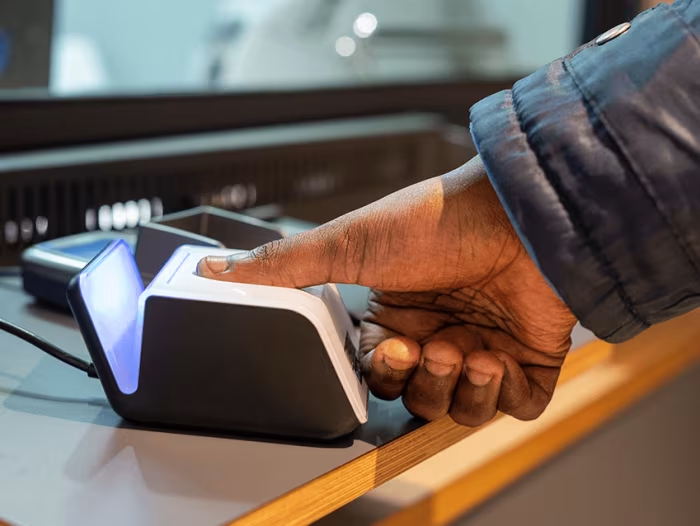Resource / Online Journal
How to Prevent Phishing Attacks
Understanding how to prevent phishing attacks is crucial for protecting your organization's sensitive information and maintaining overall cybersecurity.
Published on Jul 26, 2024

In the digital age, phishing attacks have become one of the most prevalent and damaging cyber threats that individuals and organizations face. Understanding how to prevent phishing attacks is crucial for maintaining cybersecurity and protecting sensitive information. This article outlines effective strategies and best practices for preventing phishing attacks, ensuring that you and your organization stay safe from these malicious attempts.
Understanding Phishing Attacks
Phishing attacks are deceptive attempts by cybercriminals to obtain sensitive information such as usernames, passwords, credit card details, and other personal data. These attacks often come in the form of emails, text messages, or websites that appear to be from legitimate sources. By tricking individuals into providing confidential information, phishing attacks can lead to significant financial and reputational damage.
Recognizing Phishing Attempts
The first step in learning how to prevent phishing attacks is recognizing the common signs of a phishing attempt. Being able to identify these red flags can help you avoid falling victim to these scams.
Common Signs of Phishing:
- Suspicious Sender Addresses: Phishing emails often come from addresses that look similar to legitimate ones but contain slight variations.
- Generic Greetings: Phishing emails may use generic greetings such as "Dear Customer" instead of addressing you by name.
- Urgent Language: Many phishing attempts use urgent language, claiming that immediate action is required to avoid consequences.
- Suspicious Links and Attachments: Phishing emails often contain links or attachments that, when clicked or opened, lead to malicious websites or download malware.
- Unusual Requests: Be wary of unexpected requests for personal information or financial transactions.
Implementing Technical Solutions
Technology plays a vital role in preventing phishing attacks. Implementing robust technical solutions can help detect and block phishing attempts before they reach your inbox.
Effective Technical Solutions
- Email Filtering: Use advanced email filtering solutions to detect and block phishing emails. These filters analyze incoming emails for known phishing signatures and suspicious content.
- Spam Filters: Configure spam filters to reduce the likelihood of phishing emails reaching your inbox. Regularly update these filters to adapt to new phishing tactics.
- Anti-Malware Software: Install and maintain up-to-date anti-malware software to detect and prevent malware infections from phishing attacks.
- DNS Filtering: Implement DNS filtering to block access to known phishing websites and malicious domains.
- Two-Factor Authentication (2FA): Enable 2FA on all accounts to add an extra layer of security. Even if credentials are compromised, 2FA can prevent unauthorized access.
Educating Employees and Users
Human error is a significant factor in successful phishing attacks. Educating employees and users on how to prevent phishing attacks is essential for minimizing the risk.
Key Education Strategies:
- Regular Training: Conduct regular training sessions to educate employees about the dangers of phishing and how to recognize and respond to phishing attempts.
- Phishing Simulations: Perform phishing simulations to test employees' awareness and response to phishing attempts. Use the results to identify areas for improvement.
- Security Awareness Campaigns: Run ongoing security awareness campaigns to reinforce best practices and keep phishing prevention top of mind.
- Reporting Mechanisms: Establish clear procedures for reporting suspected phishing attempts. Encourage employees to report any suspicious emails or messages immediately.
- Policy Enforcement: Develop and enforce security policies that mandate safe email and internet practices, including guidelines for handling suspicious communications.
Strengthening Authentication Methods
Strong authentication methods are crucial in preventing unauthorized access resulting from phishing attacks. Enhancing authentication practices can significantly reduce the risk of successful phishing attempts.
Best Authentication Practices:
- Multi-Factor Authentication (MFA): Implement MFA across all systems and accounts to provide an additional layer of security.
- Biometric Authentication: Use biometric authentication methods such as fingerprint or facial recognition to enhance security.
- Password Policies: Enforce strong password policies that require complex passwords and regular password changes.
- Single Sign-On (SSO): Implement SSO solutions to simplify authentication while maintaining security.
Monitoring and Incident Response
Effective monitoring and incident response are crucial components of a comprehensive strategy on how to prevent phishing attacks. Being prepared to respond quickly to incidents can minimize damage and prevent further attacks.
Monitoring and Response Strategies:
- Continuous Monitoring: Implement continuous monitoring solutions to detect and respond to suspicious activities in real time.
- Incident Response Plan: Develop and maintain an incident response plan that outlines procedures for responding to phishing attacks. Regularly review and update the plan.
- Forensic Analysis: Conduct forensic analysis of phishing incidents to understand the attack vectors and improve defenses.
- Recovery Procedures: Establish clear recovery procedures to restore systems and data affected by phishing attacks.
Promoting a Security Culture
Creating a culture of security within your organization is a vital aspect of how to prevent phishing attacks. When security is embedded in the organizational culture, employees are more likely to follow best practices and remain vigilant against threats.
Promoting Security Culture:
- Leadership Support: Ensure that organizational leaders support and prioritize cybersecurity initiatives.
- Open Communication: Foster an environment where employees feel comfortable reporting security concerns and incidents.
- Recognition and Rewards: Recognize and reward employees who demonstrate excellent cybersecurity practices and contribute to the organization's security posture.
- Collaboration: Encourage collaboration between IT, security teams, and other departments to create a unified approach to cybersecurity.
Conclusion
Understanding how to prevent phishing attacks is crucial for protecting your organization's sensitive information and maintaining overall cybersecurity. By recognizing phishing attempts, implementing technical solutions, educating employees, strengthening authentication methods, and fostering a security culture, you can significantly reduce the risk of falling victim to phishing attacks. Investing in these strategies not only safeguards your organization but also enhances trust and confidence among your customers and stakeholders. In a world where cyber threats are constantly evolving, staying vigilant and proactive is essential. Embrace these best practices and make them a core part of your cybersecurity strategy to effectively prevent phishing attacks.
Recommended articles


Benefits of PAM Solutions: Enhancing Security and Efficiency
Take Your Identity Strategy
to the Next Level
Strengthen your organization's digital identity for a secure and worry-free tomorrow. Kickstart the journey with a complimentary consultation to explore personalized solutions.